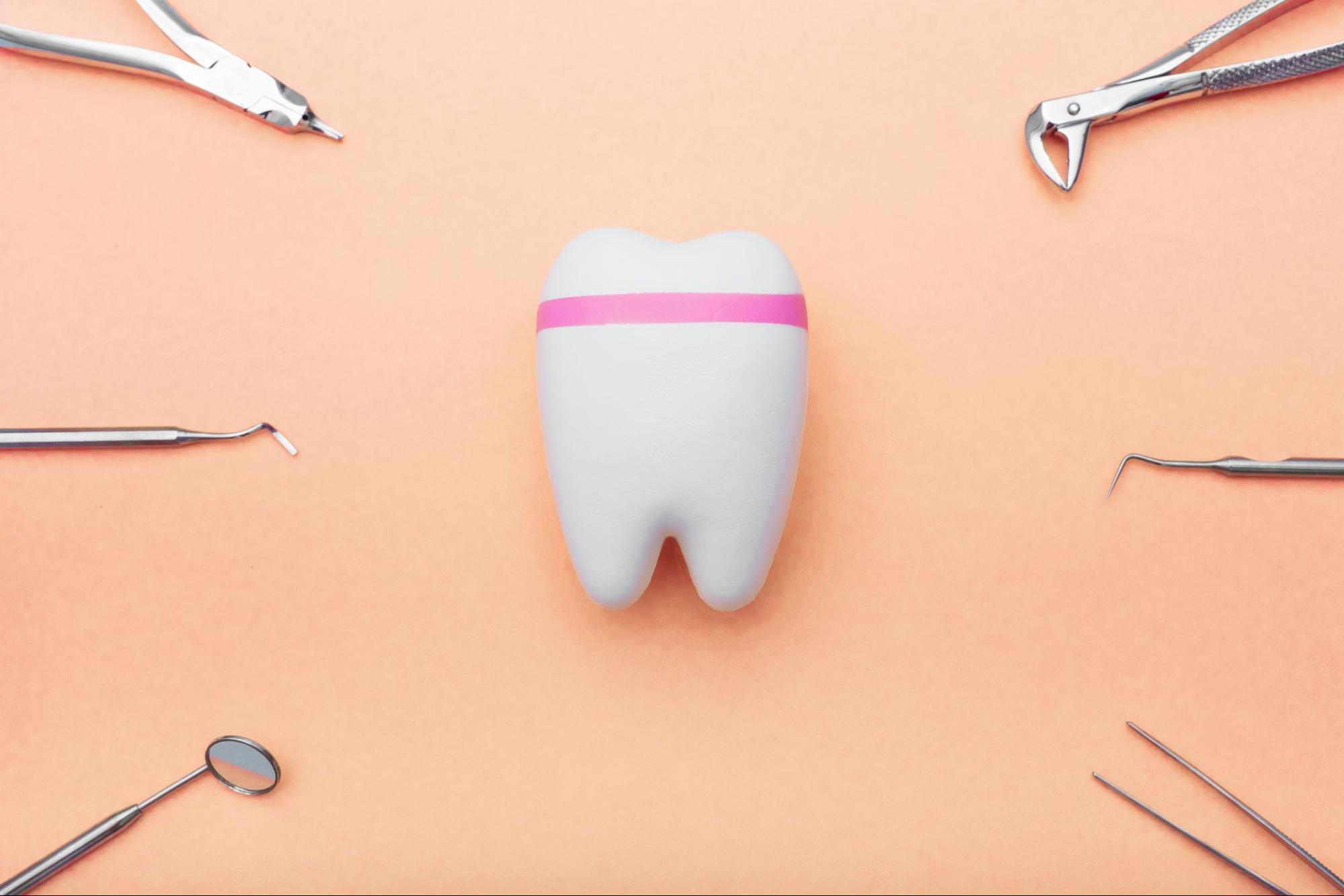Tooth pain can be frustrating and disruptive to daily life. Cavities are among the most common dental issues that can lead to severe damage if ignored. A tooth filling is a simple and effective solution for restoring a damaged tooth and preventing further decay. This procedure is safe, widely used, and can help maintain oral health for years. Understanding how tooth fillings work and their benefits ensures better decisions about dental care.
What is a Tooth Filling?
A tooth filling is a treatment that restores teeth affected by cavities or minor damage. It involves removing the decayed portion of the tooth and replacing it with a durable material. Fillings strengthen the tooth structure and prevent bacteria from causing further decay. Different materials are available, each offering various durability, aesthetics, and cost benefits.
How Tooth Fillings Work
Tooth filling begins with removing the decayed area of the tooth. A dentist carefully cleans the affected part to prevent further damage. The filling material is placed inside the cavity to restore the tooth’s structure. It creates a firm barrier that protects against bacteria and further decay. A well-placed filling helps maintain the tooth’s function and appearance.
Signs You May Need a Tooth Filling
Tooth sensitivity to hot, cold, or sugary foods can indicate a cavity. Pain or discomfort when chewing may also be a sign of decay. Visible holes, cracks, or dark spots on a tooth suggest that bacteria have eroded the enamel. A rough or sharp feeling on the surface of a tooth may indicate damage that requires attention. Early detection of these symptoms can prevent more extensive dental problems.
Types of Tooth Fillings
Several types of fillings are available, each with unique properties. The choice depends on the tooth’s location, budget, and cosmetic preference. Some materials offer outstanding durability, while others provide a more natural appearance. A dentist can help determine the best option based on individual needs.
Amalgam Fillings
Amalgam fillings are made from silver, tin, copper, and mercury. They are durable and can withstand strong chewing forces, making them ideal for molars. Amalgam fillings are often more affordable than other options, but their silver color makes them noticeable. Some people prefer alternative materials due to aesthetic concerns. Despite this, they remain a reliable choice for long-term dental restoration.
Composite Fillings
Composite fillings are made from tooth-colored resin. They blend seamlessly with natural teeth, making them popular in visible areas. These fillings are bonded directly to the tooth, providing additional support. However, they may not be as long-lasting as metal fillings and can wear down over time. Regular dental care helps maintain their durability and appearance.
Ceramic Fillings
Ceramic fillings, usually made of porcelain, offer both durability and a natural look. They resist staining better than composite fillings and are suitable for front and back teeth. While they are more expensive, their long-lasting quality makes them a preferred choice for many patients. The process of placing ceramic fillings may require multiple visits. They are an excellent option for those who want both strength and aesthetics.
Gold Fillings
Gold fillings are made from a gold alloy, making them highly durable and corrosion-resistant. If properly maintained, they can last for decades. However, they are costly and require multiple dental visits. Some people find the appearance of gold fillings less appealing than tooth-colored options. Despite this, their strength and longevity make them a solid investment in dental health.
Cost of Tooth Fillings
The cost of tooth fillings varies based on several factors. The filling material, the location of the dental clinic, and whether insurance covers the procedure can all influence pricing. Some materials, like amalgam, are more affordable, while ceramic and gold fillings cost more due to their durability and aesthetic benefits. Patients without insurance may explore discount plans or payment options to make treatment more affordable. Investing in a filling early on can prevent higher costs from more severe dental procedures in the future.
Tooth Fillings vs. Other Dental Restorations
Fillings are not the only solution for restoring damaged teeth. In some cases, other dental restorations may be necessary for better protection and durability. When cavities are too large for fillings, dentists may recommend crowns, inlays, or onlays. Understanding the differences between these options helps make the best choice for dental health:
When a Filling Is the Best Option
Fillings work best for small to medium-sized cavities. They help preserve most of the natural tooth structure while preventing further decay. Compared to crowns, fillings are quick to apply and require less tooth removal. They are also more affordable than more extensive restorations. If a cavity is caught early, a filling is often the most effective and least invasive solution.
When Other Restorations May Be Necessary
A filling may not provide enough strength for larger cavities or weakened teeth. Crowns cover the entire tooth, offering more protection for teeth with severe damage. Inlays and onlays are used when damage is too extensive for a regular filling but do not require a full crown. These options provide added durability and help restore the tooth’s function. A dentist can evaluate the extent of damage to determine the best treatment plan.
The Tooth Filling Procedure
Getting a tooth filling is straightforward and usually takes less than an hour. Dentists use local anesthesia to numb the area before removing decay. The filling material used will determine the final steps of the procedure. Once placed, the filling restores the tooth’s function and appearance. The process is generally painless and provides immediate relief.
Preparing the Tooth for a Filling
The dentist first examines the tooth and may take X-rays if necessary. The decayed or damaged part is carefully removed to stop the spread of bacteria. The remaining structure is shaped to ensure a proper fit for the filling. Before placing the material, the dentist cleans and disinfects the area. This step ensures that the filling bonds are securely filled and last longer.
Placing the Filling
After the cavity preparation, the dentist inserts the filling material. The material is carefully shaped to match the natural tooth’s contours. Some fillings, like composite or ceramic, are hardened using a special light. The dentist then polishes the filling to smooth its surface. The bite is checked to ensure comfort and proper function.
How Long Do Tooth Fillings Last?
The lifespan of a filling depends on factors such as material type and oral care habits. Fillings experience wear over time due to chewing and grinding. Regular dental checkups help monitor their condition and prevent complications. Good oral hygiene practices can extend the life of a filling. Replacing a damaged filling in time prevents further tooth decay.
Factors That Affect Durability
The filling material plays a major role in longevity. Amalgam and gold fillings last longer than composite and ceramic options. Eating hard or sticky foods can wear down fillings faster, and personal habits like grinding teeth also impact their durability. Regular brushing, flossing, and dental visits help maintain fillings for longer.
Signs a Filling Needs Replacement
Sensitivity or pain in a filled tooth can indicate a problem. If a filling becomes loose or falls out, it needs immediate attention. Cracks or rough edges on the surface may mean the filling is wearing down. Food getting trapped around the filling suggests gaps have formed. Promptly seeing a dentist can prevent further damage to the tooth.
Understanding the Pain Factor in Tooth Fillings
Many people worry about pain when getting a filling, but modern dentistry makes the process comfortable. Local anesthesia numbs the tooth and surrounding area before drilling begins, ensuring patients do not feel pain during the procedure. Some mild discomfort or pressure may be experienced, but it is usually minimal. After the procedure, some temporary sensitivity or soreness is normal but should subside within a few days.
Common Discomforts After a Filling
Some patients experience sensitivity to hot, cold, or sweet foods for a few days. Mild soreness around the filled tooth is also common. This discomfort is temporary and should go away on its own. Pain lasting longer than a few days may indicate an issue with the filling. Contacting a dentist can help resolve any concerns.
Managing Pain After a Tooth Filling
Over-the-counter pain relievers can help ease discomfort. Avoiding extremely hot or cold foods can reduce sensitivity. Eating soft foods for the first day can also minimize pressure on the filled tooth. If pain persists, the dentist may need to adjust the filling to ensure a proper bite.
When to Contact a Dentist If Pain Persists
Pain that lasts more than a week may indicate a problem. A high filling may cause discomfort when biting and need adjustment. Persistent pain or swelling may suggest an infection. Cracks or gaps in the filling can also cause sensitivity. A dentist can assess and fix any issues to ensure comfort.
Can Tooth Fillings Be Replaced or Removed?
Fillings do not last forever and may need replacement over time. Wear and tear from chewing can cause fillings to weaken or crack. Some people choose to replace older fillings for cosmetic reasons. Upgrading to a more durable or natural-looking material is also an option. Regular dental checkups help determine when a filling needs to be replaced.
Why Fillings May Need Replacement Over Time
Fillings wear due to chewing and grinding. Small cracks or gaps can develop, allowing bacteria to enter, increasing the risk of further decay and infections. Keeping up with dental visits helps catch these issues early. Replacing a damaged filling prevents more extensive dental problems.
Removing and Replacing an Old Filling
The dentist carefully removes the old filling using specialized tools. Any additional decay is cleaned out before a new filling is placed. The tooth is then prepared, and the new material is bonded securely. This process restores the tooth’s strength and function. It is quick, safe, and helps maintain oral health.
Protect Your Smile With the Right Tooth Filling
Your teeth are more than just tools for chewing; they define your confidence and well-being. If ignored, a small cavity today can become a painful ordeal tomorrow. Taking action now with a simple filling can save you from complex and costly treatments later. Prioritizing dental health isn’t just about fixing problems but preserving your smile for years. Schedule your dental visit and invest in the strength of your teeth today.
Your journey to better dental care starts here—read more on the Meader Family Dentistry blog!






